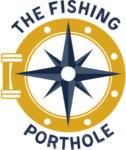

The MMO and Defra manage the fisheries within the UKs exclusive economic zone (EEZ), 200 mile limit from the coast. Territorial waters are divided between
Marine Management Organisation – GOV.UK (www.gov.uk)
Department for Environment, Food & Rural Affairs – GOV.UK (www.gov.uk)
Department of Agriculture, Environment and Rural Affairs (daera-ni.gov.uk)
Marine Scotland Information | (marine.gov.scot)
Researchers and experts who produce science and science based advice which informs management
Cefas (Centre for Environment, Fisheries and Aquaculture Science)
ICES (International Council for Exploration of the Seas)
Universities and various advisory councils
Natural England – GOV.UK (www.gov.uk)
Marine Scotland science – gov.scot (www.gov.scot)
Fisherman, seafood traders, producer organisations, industry groups, industry scientists and others who engage, participate and lead with management initiatives
The inshore fisheries (within 6 nautical miles of the coastline) are managed by
Association of Inshore Fisheries and Conservation Authorities (association-ifca.org.uk) – IFCA manage England through ten regional associations
The Regional Inshore Fisheries Groups (RIFG) – have a national and five regional management associations for Scotland
The Welsh and Irish devolved administrations manage the regional fisheries
Department of Agriculture, Environment and Rural Affairs (daera-ni.gov.uk)